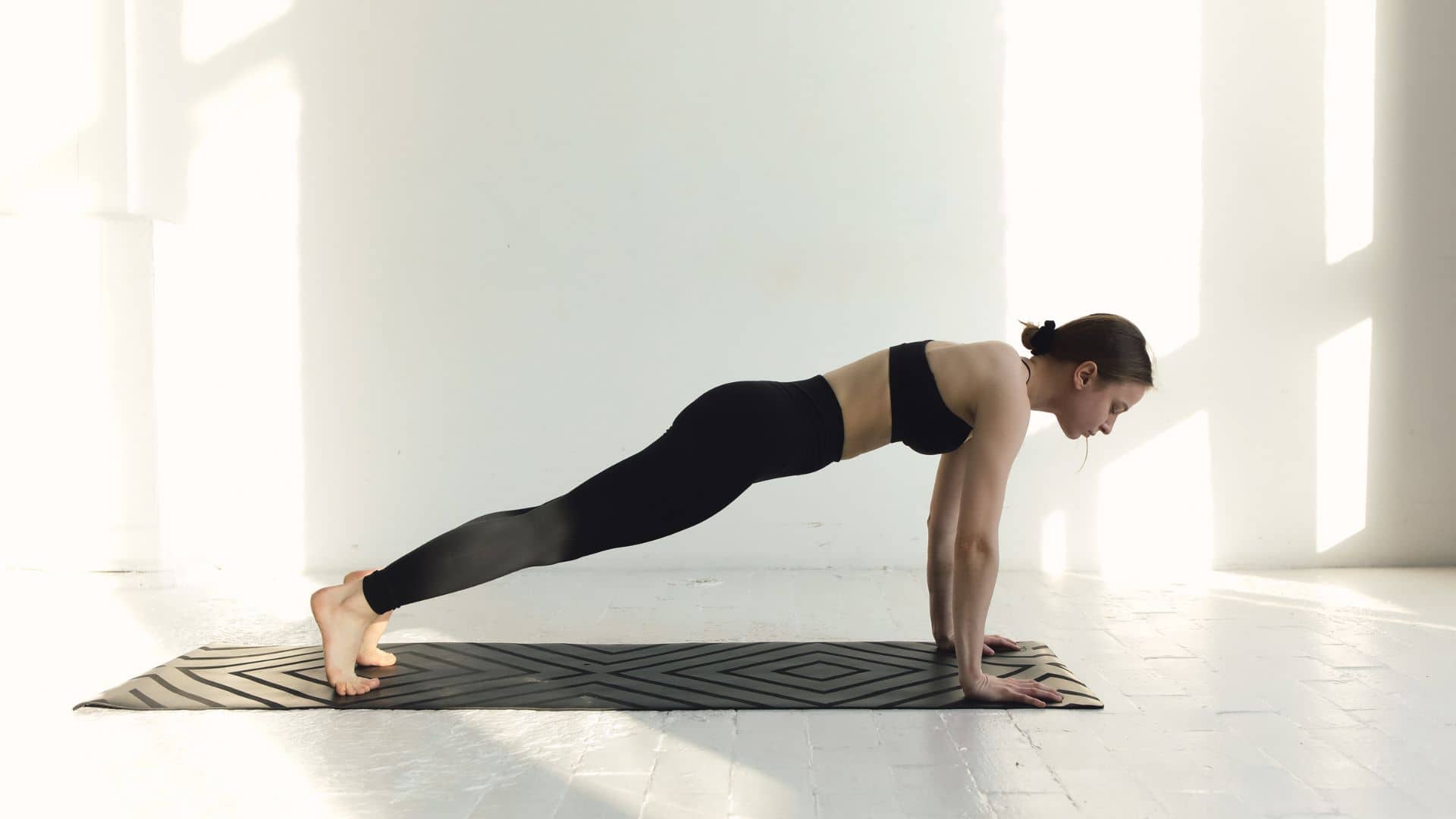Back pain can be a debilitating and frustrating issue to deal with. It can make everyday activities, such as bending down or sitting, uncomfortable or painful.
Many people turn to medication or physical therapy to alleviate their pain, but what about exercises like pushups? Can they help reduce back pain? In this article, we’ll explore the relationship between pushups and back pain, and whether or not this popular exercise can be an effective form of pain relief.
Pushups can help reduce back pain over the long term by strengthening core muscles and improving posture. However, success depends on how you perform pushups with proper form and alignment. Poor alignment and letting your hips drop can place stress on your lower back and trigger pain if you are prone to it. If you have serious back injuries, it is not advisable to perform pushups. It may be worth a shot to alter your pushup form or try a similar exercise until your back pain subsides.
Keeping the shoulder blades pulled back during pushups increases the activation of the rhomboid and trapezius muscles located in the upper back, which can also help with back pain. According to sources.
Pushups can help reduce back pain overtime
Push-ups are a bodyweight exercise that work the chest, shoulders, triceps, and core muscles.
When performed correctly, they can strengthen and stabilize the muscles that support the spine, leading to improved posture and reduced back pain over time.
However, improper form or alignment during push-ups can increase lower back muscle activation and strain, potentially exacerbating existing back pain or causing new discomfort.
To properly perform a push-up, one should start in a plank position with the hands shoulder-width apart and the elbows close to the body.
The core should be engaged, and the body should form a straight line from head to heels. From this position, the body is lowered towards the ground by bending the elbows, keeping them close to the body.
The chest should touch the ground, and then the body is pushed back up to the starting position.
It is very important to avoid arching the lower back or letting the hips sag during the exercise, as this can increase the load on the lower back and cause pain.
Push-ups should also be modified or avoided altogether if they cause discomfort or exacerbate existing back pain.
Push-ups can be an effective way to reduce back pain over the long term by strengthening core muscles and improving posture.
However, proper form and alignment are key to avoiding pain or injury. It is recommended that those with back pain consult with a medical professional, a certified personal trainer or physical therapist before starting or modifying any exercise routine.
Here is a chart table summarizing the benefits of different types of pushups for reducing back pain:
Type of Pushup |
Benefits for Back Pain |
|---|---|
| Regular Pushup | Regular exercise can help reduce back pain, but proper form is essential |
| Backward Pushup | Activates the triceps and pectoralis major muscles, which can help improve posture and reduce back pain |
| Incline Pushup | Can help improve posture and alleviate lower back pain |
Poor alignment and form can place stress on your lower back and trigger pain.
Poor alignment during push-ups can cause the muscles in the lower back to overwork, leading to strain and pain.
When performing a push-up, it is very important to keep the hips in line with the shoulders and ankles. If the hips are allowed to drop or sag, the lower back muscles can become overstretched and strained, leading to pain and discomfort.
Furthermore, if a person is already prone to back pain or has an existing back injury, improper alignment during push-ups can exacerbate the problem.
This is because the lower back muscles are already weakened and more susceptible to strain, making it important to properly engage the core and maintain proper alignment during the exercise.
It’s worth noting that push-ups are not the only exercise that can cause back pain if performed with poor form.
Many exercises, such as deadlifts and squats, can also cause back pain if performed incorrectly.
Therefore, it is important to learn proper form and technique for any exercise and to modify or avoid exercises that cause discomfort or pain.
Poor alignment and letting the hips drop during push-ups can place stress on the lower back muscles and trigger pain, especially for those who are prone to back pain or already have an existing back injury. Proper form and alignment are crucial for avoiding pain and injury during push-ups and any other exercise.
Here is the chart table regarding the effects of pushup form and alignment on lower back pain:
Pushup Form and Alignment |
Effects on Lower Back Pain |
|---|---|
| Poor Form and Alignment | Places stress on the lower back and can trigger pain |
| Proper Form and Alignment | Helps strengthen core muscles and improve posture, reducing the risk of lower back pain |
It is important to ensure proper form and alignment during pushups to avoid placing undue stress on your lower back. By engaging your core, keeping your hips from dropping, and keeping your shoulder blades pulled back, you can perform pushups safely and effectively to reduce your risk of lower back pain. If you experience pain during or after pushups, it may be helpful to consult a healthcare professional to determine the cause and develop a safe exercise plan.
It is not advisable to perform pushups if you have serious back injuries.
If you have a serious back injury, it is not recommended to perform push-ups or any other exercise without first consulting with a medical professional.
Certain back injuries, such as herniated discs or spinal stenosis, may require specific modifications or restrictions to exercise to prevent further injury or pain.
However, for those with mild to moderate back pain, it may be worth altering push-up form or trying a similar exercise to reduce pain and avoid aggravating the injury.
For example, modified push-ups, such as wall push-ups or push-ups on an elevated surface, can help reduce the load on the lower back muscles and allow for proper alignment during the exercise.
Additionally, exercises that target the core, such as planks or bird dogs, can also help strengthen the muscles that support the spine and reduce back pain over time.
It’s important to choose exercises that do not cause pain or discomfort and to gradually increase the intensity and duration of the exercise over time.
for those with serious back injuries, it is not recommended to perform push-ups or any other exercise without first consulting with a medical professional.
However, for those with mild to moderate back pain, it may be worth altering push-up form or trying a similar exercise to reduce pain and avoid aggravating the injury.
It’s important to choose exercises that do not cause pain or discomfort and to gradually increase the intensity and duration of the exercise over time.

Here is the chart table summarizing the advice regarding performing pushups if you have serious back injuries:
Back Injury Severity |
Advice for Performing Pushups |
|---|---|
| Mild Back Injury | Consult with a healthcare professional before performing pushups |
| Moderate Back Injury | Avoid pushups until back pain subsides and seek medical advice before resuming exercise |
| Severe Back Injury | Do not perform pushups without medical clearance and guidance from a healthcare professional |
If you have serious back injuries, it is important to exercise caution when performing pushups. In some cases, it may not be advisable to perform pushups at all until you have received medical clearance and guidance from a healthcare professional. It is always better to err on the side of caution and seek medical advice before resuming exercise after a back injury to avoid further injury or complications.
keeping the shoulder blades pulled back during pushups can help activation of the rhomboid in the back.
That is correct. Keeping the shoulder blades pulled back during pushups can indeed increase the activation of the rhomboid and trapezius muscles located in the upper back, which can help with back pain.
According to a guide on “Library: Research Basics: Create a Search Statement,” using exact phrase searching and specialized search words called Boolean terms can help people develop a search statement that can effectively narrow or broaden their pool of results when used with multiple keywords.
Additionally, as stated in a post on Stack Overflow, SQL’s “charindex” function can be used instead of the “like” operator in cases where the search criteria contains specific text.
Therefore, if you’re experiencing back pain and are looking for ways to alleviate it, you can search for exercises or techniques that target the rhomboid and trapezius muscles in the upper back, such as pushups with proper form.
Here is the chart table summarizing the effect of keeping the shoulder blades pulled back during pushups on activation of the rhomboid muscle:
Shoulder Blade Position |
Effect on Rhomboid Activation |
|---|---|
| Shoulder Blades Protracted (Forward) | Decreased Rhomboid Activation |
| Shoulder Blades Retracted (Pulled Back) | Increased Rhomboid Activation |
When performing pushups, it is important to maintain proper shoulder blade position to activate the rhomboid muscle in the back. When the shoulder blades are protracted or pushed forward, this can lead to decreased activation of the rhomboid muscle. In contrast, when the shoulder blades are retracted or pulled back, this can lead to increased activation of the rhomboid muscle. By keeping the shoulder blades pulled back during pushups, you can help strengthen the rhomboid muscles in your back, leading to improved posture and reduced risk of back pain.
Conclusion
The information above presents mixed opinions regarding push-ups and back pain. While some sources suggest that push-ups can be good for the back and may even help relieve back pain if performed correctly, others caution that certain push-up variations can increase lower back muscle activation and cause discomfort or pain.
Ultimately, whether push-ups are helpful or harmful for reducing back pain may depend on a person’s individual circumstances and how they perform the exercise.
Therefore, the conclusion is that push-ups may help reduce back pain for some people, but not for others. It is recommended that those with back pain consult with a medical professional before starting or modifying any exercise routine.
Sources:
- vitalizedfuture
- livestrong
- cathe
- medicalnewstoday
- nytimes
- libguides.daemen.edu
- stackoverflow
- medicalnewstoday
- healthline
- verywellfit
- nature
- ncbi.nlm.nih


